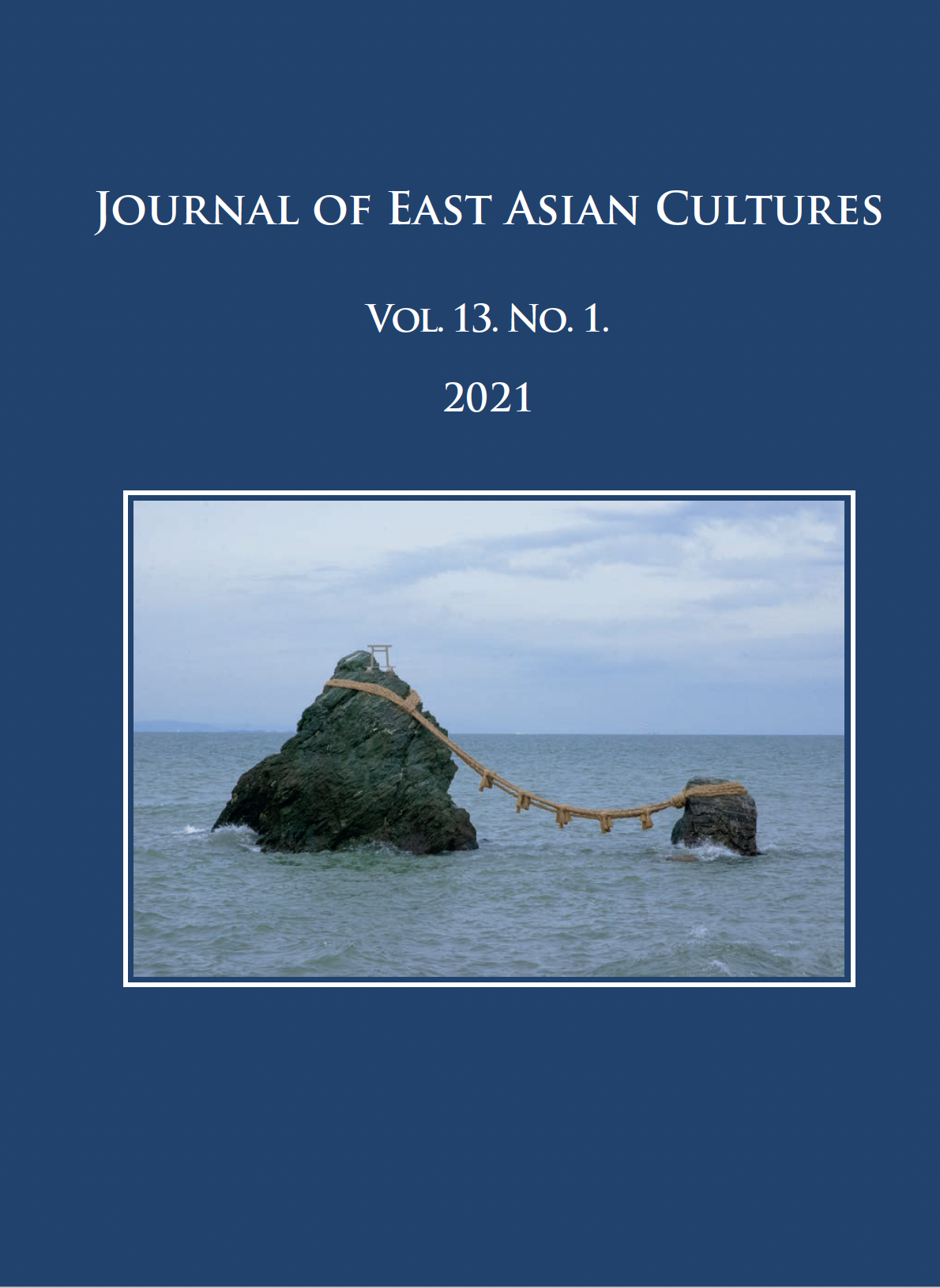Published 2021-12-15
Keywords
- coming of age,
- seijinshiki,
- rites of passage,
- maturity,
- ritual
How to Cite
Copyright (c) 2021 the author(s)

This work is licensed under a Creative Commons Attribution-NonCommercial 4.0 International License.
Abstract
Coming of age, as one of the major transitions in the human life cycle, marks the threshold between childhood and adulthood. This transition involves the physical and psychological, as well as the social maturity of the individual. The present article discusses the contemporary practice of the Japanese coming of age ritual, known as seijinshiki, which although it is a relatively modern invention, is nourished by a century-long tradition of coming of age rituals as well as by the traditional world-view on the human life cycle. Today, the ceremony is facing a new challenge due to the upcoming changes in the age of legal adulthood in Japan. Seijinshiki is an excellent example of how change is integrated as well as reflected throughout ritual practice. It vividly reflects social processes as well as mirroring several problems that Japanese society has been facing in our own time. The paper will examine some of these problems together with the major changes that affected the various forms of coming of age rites in Japan across history. The paper also demonstrates that ritual continues to be regarded in Japan as a valid social and individual instrument to treat passages in human life.
References
- Akata, Mitsuo 赤田光男 1979. “Girei denshō 儀礼伝承 (Ritual tradition).” In: Mitsuo Akata, Noboru Miyata, Ajio Fujita et al (eds.) Nihon Minzokugaku. Tokyo: Kōbundō, 83–112.
- Berque, Augustin 1995. “Conclusion. The Rituals of Urbanity: Temporal Forms and Spatial Forms in Japanese and French Cities.” In: Jan van Bremen and Dolores P. Martinez (eds.) Ceremony and Ritual in Japan: Religious Practices in an Industrialized Society. London and New York: Routledge, 246–258.
- Bossard, James H.S. and Boll, E. Stoker 1960 (1948). The Sociology of Child Development. New York: Harper Brother Publ.
- Douglas, Mary 2003 (1970). Natural Symbols. London and New York: Routledge Classics.
- Van Gennep, Arnold 1960. Rites of Passage. London, Routledge and Kegan Paul. https://doi.org/10.7208/chicago/9780226027180.001.0001
- Fukutake, Tadashi 1972 (1967). Japanese Rural Society. Transl. by Ronald P. Dore. Ithaca and London: Cornell University Press.
- Grimes, L. Ronald 1982. “Defining Nascent Ritual.” Journal of the American Academy of Religion 50.4: 539–556. https://doi.org/10.1093/jaarel/L.4.539
- Itabashi, Haruo 板橋春夫 2007. Tanjō to shi no minzokugaku 誕生と死の民俗学 (Folklore of birth and death). Tokyo: Yoshikawa Kōbunkan.
- Iwata, Shigenori岩田重則 1999. “Nenrei chitsujo to nenrei shūdan 年齢秩序と年齢集団 (Age order and age groups).” In: Ajio Fujita and Mitsuo Akata (eds.) Nihon no Minzokugaku 3. Shakai to minzoku. Yūzankaku, 139–154.
- Papp, Melinda 2016. Shichigosan. Change and Continuity of a Family Ritual in Contemporary Urban Japan. New York: Palgrave Macmillan.
- Papp, Melinda 2011. “A korai gyermekkor rítusai Japánban és a hozzákapcsolódó hagyományos népi hitvilág” [Rites of early childhood in Japan and its associated traditional folk belief]. Távol-keleti Tanulmányok 3.1–2: 227–247.
- Rohlen, Thomas 1976. “The Promise of Adulthood in Japanese Spiritualism.” Daedalus 105.2: 125–143.
- Sakurai, Shigeru 桜井秀1938. “Shichigosan shukusetsu fūzokushikō” 七五三祝節風俗志向 [Thoughts about the custom and celebration of shichigosan]. Rekishi Kōron 7 (December): 121–124.
- Sugawara, Masako菅原正子 2000. “Shichigosan no genryū” 七五三の源流 [The origins of shichigosan]. Nihon Rekishi 6: 47–52.
- Sugawara, Masako 菅原正子 2007. Chūsei no buke to kuge no ie 中世の武家と公家の家 [Samurai and aristocratic families in the Middle Age]. Tokyo: Yoshikawa Kōbunkan.
- Tsuboi, Hirofumi坪井弘文 1976. “Shichigosan iwai 七五三祝い (The celebration of 7-5-3).” In: Kokugakuin Daigaku Nihon Bunka Kenkyūsho (eds.) Shintō yōgoshū. Tokyo: Shintō Bunkakai, 166–171.
- Turner, Victor 1969. The Ritual Process. Structure and Anti-structure. Ithaca, New York: Cornell University Press.
- Yamaji, Masanori 2005. “Gyerek a Japán jog- és kultúrtörténetben” [Child in Japan’s legal and cultural history]. In: Szabolcs Felföldi (ed.) Abhivadana. Tanulmányok a hatvanéves Wojtilla Gyula tiszteletére [Abhivadana. Studies in Honour of the 60 Years Old Gyula Wojtilla]. Szeged: Szegedi Tudományegyetem, 339–357.

